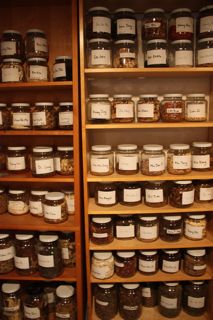Healing as a family
Wednesday, February 11th, 2009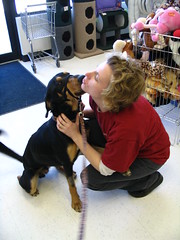 Did you know that we often share the same diseases and health conditions with our animal companions?
Did you know that we often share the same diseases and health conditions with our animal companions?
I can not count the times that I have been in a treatment room with someone and declared that their cat or dog had say asthma to have them comment, “that’s odd I also am asthmatic.”
Many times it goes beyond just two creatures. I remember telling one woman that I thought her cat had inflammatory bowel disease.
“That’s so strange, “ she said, “because my husband is in the hospital with IBD and has been for the past week and the whole time he has been in there my stomach has been bothering me also.”
Many families may not share specific diseases but related ones. I have found that people with fibromyalgia and lupus tend to have animals with inflammatory bowel disease, asthma, and muscle or tendon pain (especially in the back). In Chinese medicine IBD, asthma and back tendon pain are one condition called liver qi constant. This is a disease that gets worse with stress like fibromyalgia and lupus.
 When I first see an animal, I often ask their person if they have sensitivities to certain drugs or herbs because it is often the case that if the person is sensitive to something that their animal will be also. People that have strong reactions to acupuncture will often have animals with strong reactions to acupuncture. When people cannot tolerate a certain drug it is often the same for their animal.
When I first see an animal, I often ask their person if they have sensitivities to certain drugs or herbs because it is often the case that if the person is sensitive to something that their animal will be also. People that have strong reactions to acupuncture will often have animals with strong reactions to acupuncture. When people cannot tolerate a certain drug it is often the same for their animal.
So what is going on here?
The first response I usually get is, “Oh no! Did I make my animal sick?”
I don’t think that is the case.
And let me just add that not all people and animals share illness. Just because you had a dog die of cancer doesn’t mean you will and just because you have diabetes doesn’t mean that your cat will become diabetic.
I have definitely given this some thought over the years and have a couple theories on this strange phenomenon. These are from my own experience and I would be interested to hear other people’s ideas.
I think that we tend to attract into our lives people and animals who are like us. Because of this we also attract in animals who share the qualities that make them more prone to specific illnesses.
“But I picked my animal out, “you may say.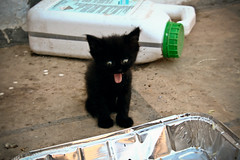
Did you really?
How many times was there just something about that one who caught your eye?
“He was just reaching through the bars of his cage, I couldn’t leave him there.”
“There was this one puppy who just wouldn’t leave my side.”
I think they often do as much of the choosing as we do.
I also believe that some animals choose to come to this plane of existence to help us with our experience. What I mean is that they are like our guardian angels in animal form. They come to help us work with our own health and healing and to teach us about grace and love. When an animal shares a disease condition with us they are helping us work with our own illness. In seeing how they work with disease we are able to bear the burden of ours better.
I’ve gotten in arguments with people over this idea because I’ve had people think that I was implying that animals are our servants. I believe the opposite, that they are more enlightened creatures than us and have chosen to help us.
I want to add one more important thought. Sometimes there is an environmental reason why we share disease. By all means if everyone in the house has lung conditions please make sure there isn’t a mold or toxin problems. Everyone knows about using the parakeets in the coal mines. Don’t ignore warnings that there is something wrong with your home.
When we share disease often curing ourselves helps our animals and helping our animals helps ourselves. When I began to work with my own anxiety my dog Jake became less anxious. When I am not taking good care of myself my cat Rudy will stop eating. All I have to do is look at Rudy or Jake to see where my own health is.
Often times we need to work towards healing ourselves to help our animal companions. Healing is not a journey to undertake alone. How amazing that we have these teachers and guilds right in our own homes!

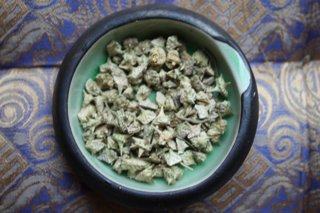 Just an interesting side note. The Chinese consider stroke to be a sudden rush of wind to the head which then has a hard time escaping the body and bounces around. One of the main herbs I use for stroke is an herb called Bai Ji Li or caltrop fruit. This herb helps to open up the body so the wind can escape and the body can heal. Check out the shape of the fruit. They are pointed to open up holes for the wind to escape through. I love when you can look at an herb and see it’s function!
Just an interesting side note. The Chinese consider stroke to be a sudden rush of wind to the head which then has a hard time escaping the body and bounces around. One of the main herbs I use for stroke is an herb called Bai Ji Li or caltrop fruit. This herb helps to open up the body so the wind can escape and the body can heal. Check out the shape of the fruit. They are pointed to open up holes for the wind to escape through. I love when you can look at an herb and see it’s function!
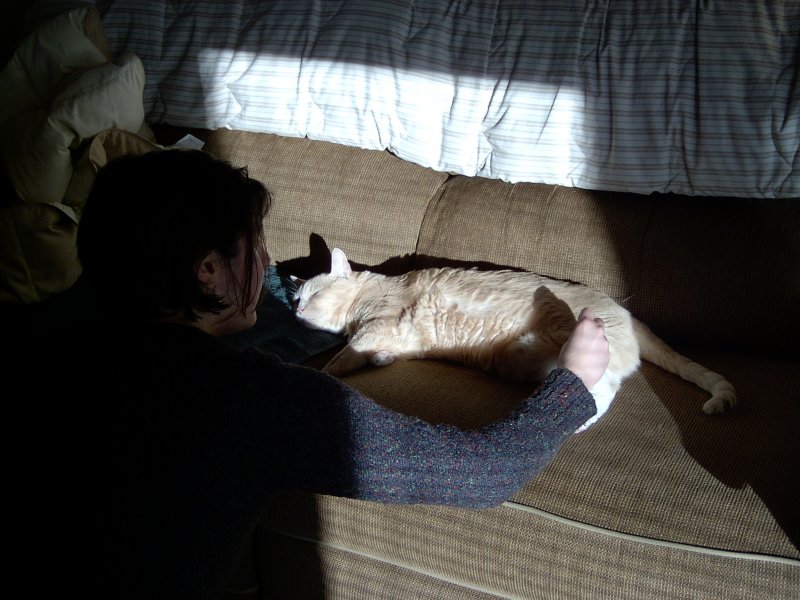 From my past notes-
From my past notes-
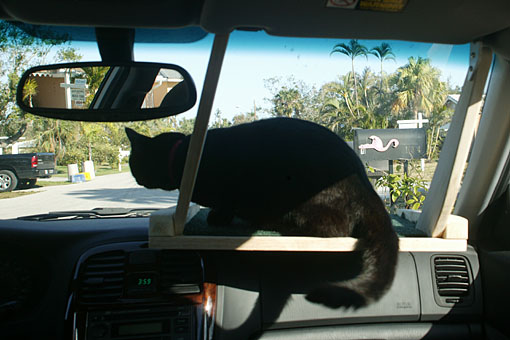

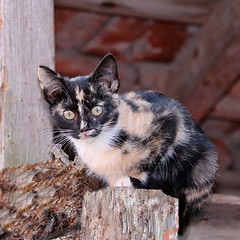
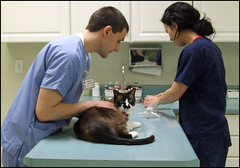


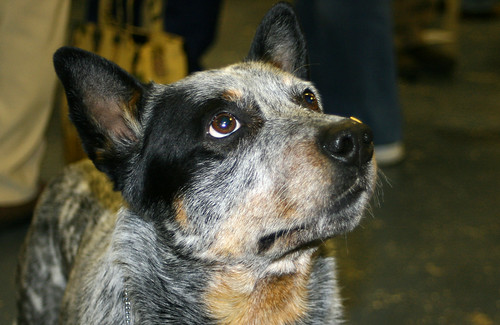


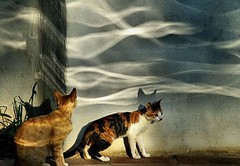
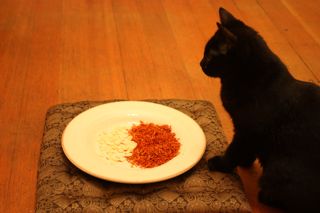 On Mondays, I descend down into the basement to disappear into my world of herbs. Once there I spend a couple hours smelling, touching and tasting, to create formulas to help the animals I work with. As I work I can hear the ancient wisdom of the past herbal masters whispering to me and feel the vibrations of these plants, many which were on this planet before us. To me working with these herbs is like cooking, only I am making up a recipe for healing by harnessing the amazing powers of these living things.
On Mondays, I descend down into the basement to disappear into my world of herbs. Once there I spend a couple hours smelling, touching and tasting, to create formulas to help the animals I work with. As I work I can hear the ancient wisdom of the past herbal masters whispering to me and feel the vibrations of these plants, many which were on this planet before us. To me working with these herbs is like cooking, only I am making up a recipe for healing by harnessing the amazing powers of these living things.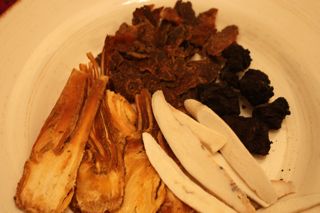 One of my clients is a paralyzed dachshund. Making up a formula for him, I call upon four of my favorite herbs to form a blood tonic. The four are all roots – foxglove, peony, Chinese angelica, and lovage – and are earthy and strong. I love to tea these in the winter and sit on my window seat sipping the strong rich tea they make. I can feel how these herbs work to strengthen me from the inside so that I have the energy to heal. This is what I want for this little dog.
One of my clients is a paralyzed dachshund. Making up a formula for him, I call upon four of my favorite herbs to form a blood tonic. The four are all roots – foxglove, peony, Chinese angelica, and lovage – and are earthy and strong. I love to tea these in the winter and sit on my window seat sipping the strong rich tea they make. I can feel how these herbs work to strengthen me from the inside so that I have the energy to heal. This is what I want for this little dog. Most of these dachshunds have closed channels because of traumatic disc injury. I can tonify the blood all I want but it is like trying to send water down a plugged hose. I add a handful of earthworms into this formula, which the Chinese say get into the blood channels and wiggle them open like a roto rooter opening a clogged drain.
Most of these dachshunds have closed channels because of traumatic disc injury. I can tonify the blood all I want but it is like trying to send water down a plugged hose. I add a handful of earthworms into this formula, which the Chinese say get into the blood channels and wiggle them open like a roto rooter opening a clogged drain.

